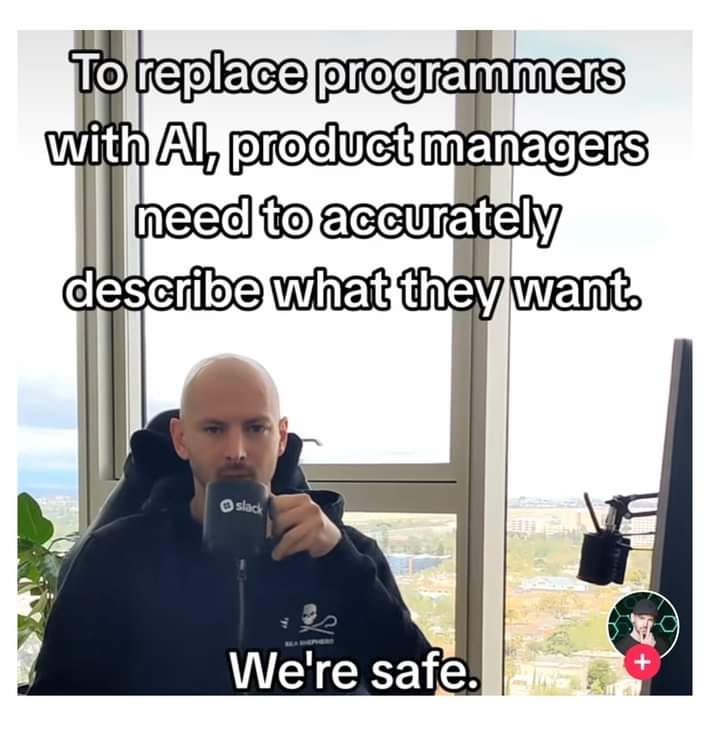What If GPT Had a Dream in 4K?
Understanding the concept of multimodal latent language modeling with next-token diffusion.
You’re sitting at your desk. A soft melody plays in the background. Rain gently taps your window. You glance at a photo a child playing piano in dim light. Now imagine asking an AI to feel that moment and express it in words, in sound, in visuals. One scene, many senses. One input, many languages.
Most AI today? It can fake it. Stitch together something passable.
But what if it could understand the moment the way you do holistically, contextually, emotionally? That’s the promise of a new kind of architecture that doesn’t just translate between modalities, but reasons within them all inside a single, unified brain.
In todays edition of Where’s The Future in Tech we will talk about a whole new generation of multimodal latent language modeling with next-token diffusion a technical mouthful, yes, but a conceptual breakthrough that might finally give AI a true sense of perception.
Why Today’s Multimodal AI Feels Disjointed
Before we get to the solution, let’s understand what’s broken. Most of today's so-called "multimodal" models are just ensembles in disguise. You have:
A vision model that handles images.
A language model that handles text.
Maybe an audio model tagging along.
Each model is trained separately and communicates through a fragile interface usually in the form of embedding vectors shared via cross-attention or fusion layers. Sure, these models can generate captions from images or answer questions about video clips. But they’re not truly integrated. They’re like coworkers in different time zones, Slacking each other asynchronously with translation errors.
The root issue? Each modality operates in its own token universe:
Text uses words and subwords.
Images are chopped into patches or pixel embeddings.
Audio relies on spectrograms or wavelets.
There’s no shared language. So these models don’t co-think they co-guess.
Latent Tokens as a Shared Language of Thought
The revolution starts with a deceptively simple idea: what if all modalities text, vision, audio could be converted into a single type of token? Not just any token, but one that carries semantic weight, abstracted from the raw data. These are latent tokens discrete, learned representations that serve as the building blocks of meaning, regardless of where they come from.
Imagine:
A photo of a cat basking on a windowsill → gets encoded into latent tokens like “warmth,” “stillness,” “animal presence.”
The text “a peaceful afternoon” → distilled into latents carrying time, emotion, and setting.
A piano note echoing softly → transformed into latents representing mood, tone, and rhythm.
These aren’t handcrafted labels. They’re learned semantic atoms, discovered by the model during training, and crucially they all share a common dictionary. This means that once every modality is translated into these universal tokens, the AI can think in one language. It’s like finding a Rosetta Stone that works across images, audio, and text.
Architecture Breakdown:
This architecture is built on a simple but radical principle: don’t separate the senses fuse them at the level of thought. Let’s walk through each part of the architecture not just to know what it does, but why it’s necessary and how it improves over alternatives.
Modality-Specific Encoders → Discrete Latents
Each encoder acts like a front-end translator but instead of translating to English or Mandarin, it translates to a universal latent language.
Image encoder: Based on VQ-VAE (Vector Quantized Variational Autoencoder), the image is chunked into patches (like 16x16 pixels) and each patch is passed through a CNN to extract spatial features. These features are then quantized mapped to the closest vector in a learned codebook. Instead of producing a floating-point tensor, the encoder outputs a sequence of codebook indices (discrete tokens).
Text encoder: This is more than just a tokenizer. After basic tokenization (e.g., BPE), it uses a semantic compressor think of it as summarizing phrases into high-level latent chunks. “The quick brown fox” might compress into a single semantic token about motion and animality, rather than four separate words. This reduces sequence length and allows alignment with other modalities that are inherently chunked (like image patches or audio frames).
Audio encoder: Using architectures like EnCodec (from Meta), audio is split into short segments, transformed via convolutional encoders, and discretized similarly using a codebook. The result: high-level units representing not waveforms, but acoustic events chirps, rhythms, moods.
What’s critical is that all encoders output from the same vocabulary. There’s one dictionary of latent meanings. That ensures that the downstream Transformer sees a single sequence not “this part’s from an image, this part’s from text.”
Shared Token Embedding Space
Once the modalities are compressed into token IDs, those IDs are projected into vectors using a shared embedding matrix just like classic word embeddings, but now for cross-modal semantics.
Here’s where it gets clever. A token ID means the same thing whether it came from vision, language, or sound but it’s tagged with modality and position info, letting the model know context without forcing it to treat them differently.
You’re giving the Transformer everything it needs to reason:
What each token means.
Where it came from.
Where it occurred in time/space.
There’s no need for cross-attention adapters, fusion modules, or parallel streams. This is a flat, fused sequence as if the AI is reading one continuous, sensory-rich story.
Shared Transformer Backbone
This is the core. A single, causal (autoregressive) Transformer processes the sequence of embedded tokens. Why causal? Because the model’s task is prediction not just classification or tagging, but generating the next latent token, whether that’s part of a sound, word, or visual cue.
Here's the magic: the Transformer isn’t multimodal because it has separate heads for each modality. It’s multimodal because it was trained to treat modality as just another axis of variation, not a hard division.
This means:
It learns that certain image latents often precede certain words.
It understands that a rising audio pitch might co-occur with a rising visual brightness.
It can compose modalities not just copy or retrieve them.
That’s what separates it from Frankenstein models. Those bolt together pieces of expert systems. This? This blends cognition.
Next-Token Prediction via Diffusion
Traditional autoregressive models use a softmax layer over a fixed vocabulary to guess the next token. But here’s the issue: softmax assumes a well-behaved, discrete outcome. That works for language, but not for image or sound where the distribution of possibilities is fuzzy, smooth, and high-dimensional.
Enter diffusion models. Instead of predicting the next token directly, the model starts with noise and learns to denoise it gradually into the next latent token.
Here’s how it works:
The Transformer predicts a “noisy” version of the next latent token.
A denoising network (like a U-Net) refines this noisy guess in small steps, based on learned noise schedules.
After enough steps, what was once pure chaos turns into a meaningful latent the one most likely to follow in the sequence.
Why this matters:
It’s better at modeling ambiguity like whether a cat is purring or the wind is rustling the leaves.
It avoids mode collapse (generating only the most frequent outcome).
It makes the system generative by design across modalities not just in text.
You don’t pick a token. You sculpt it.
Training: Teaching the Brain to Think Multimodally
Training this kind of architecture is a delicate dance of masking, mixing, and forcing the model to reason across modalities.
Here’s how it's done:
Masking: Random spans of latent tokens are masked out just like in masked language modeling but across all modalities. Sometimes it’s part of a sentence. Sometimes a piece of a picture. Sometimes both.
Autoregressive prediction: The model must predict each masked token based on the visible context. But it does this via the diffusion denoising process, meaning it learns not just what to predict, but how to gradually form it.
Modality dropout: Occasionally, entire modalities are dropped during training. This forces the model to fill in gaps for example, generating audio based only on text and image, or predicting image latents from audio. This is how it learns true cross-modal generalization.
Temporal alignment: For video or audio that unfolds over time, tokens must be aligned to represent synchronized events. This alignment is preserved during encoding so the transformer can learn patterns like “a loud sound follows a crash” or “a smile follows a compliment.”
Why It Works
To understand the true power of this architecture, think of it like a multilingual savant not one who translates between languages, but one who thinks in concepts that transcend language altogether. This model doesn’t just understand what was said, shown, or played it understands why it matters.
Because everything runs through a shared vocabulary of latent concepts, the model doesn’t have to translate between image space and text space. It operates in a single cognitive space a language of thought that spans senses. Let’s break this down.
1. Unified Token Space = Unified Intelligence
Imagine you’re playing a piano and someone takes a photo of you mid-note. In traditional models, the audio of the note and the image of your hands exist in two parallel dimensions. They can coexist, but they can’t co-reason.
In this architecture, both are mapped to the same token space meaning the visual rhythm of your fingers and the audio tone they produce become part of the same sentence in the model’s mind. That’s not just multimodality. That’s coherence.
2. One Transformer = One Train of Thought
There’s no "vision head" arguing with a "language head." Just one brain, following one train of thought across modalities.
Think of it like a jazz musician who hears a riff, sees the rhythm in a dancer’s movement, and improvises a melody all seamlessly. They’re not switching instruments or translation dictionaries. They’re feeling the moment as one integrated experience. This transformer backbone, trained to reason over mixed tokens, behaves the same way: improvising, inferring, imagining not just generating.
3. Diffusion = Controlled Creativity
Why predict via diffusion instead of softmax? Because reality isn’t discrete. It’s messy, blurry, and full of "maybe." Diffusion-based generation lets the model approach prediction like a sculptor shaping marble:
Start with noise: the raw uncertainty of all possible futures.
Denoise gradually: guided by context, intuition, and learned priors.
Softmax gives you one sharp guess.
Diffusion gives you a gradient of possibility more human, more flexible, more real.
4. Modality Dropout = Missing Puzzle Mastery
In real life, we often make sense of things with incomplete inputs:
You hear thunder but don’t see lightning.
You read a caption without the image.
You see lips moving but hear no sound.
Because this model is trained to operate under intentional deprivation, it becomes masterful at filling in the blanks. It doesn’t just guess what’s missing it hallucinates context based on semantic structure. That’s not a bug. It’s a form of imagination.
Final Thoughts
Let’s zoom out.
This isn’t just a model that’s better at captions or speech synthesis. It’s a blueprint for something deeper: A generalist AI that can truly perceive, interpret, and express not in isolated formats, but through a shared inner language that mirrors human thought. Where previous models responded to queries, this one understands situations. You don’t prompt it with a command. You immerse it in a moment:
A painting.
A voice note.
A short story.
And it reflects that moment back to you in prose, in sound, in visuals each reinforcing the others, because they were conceived together. It’s not just a better interface. It’s a better intelligence.
Until next time,
Stay curious, stay innovative and subscribe to us to get more such informative newsletters.
Read more of WTF in Tech newsletter:








